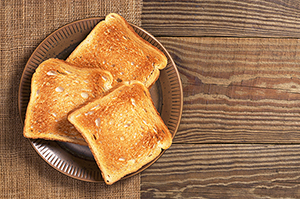What is acrylamide? It’s a chemical compound that usually forms in starchy foods like breads, cakes, cookies, crackers, cereals and potatoes (chips and fries) when they are baked, roasted or fried at high temperatures (at least 248 degrees F).
The chemical reaction known as Maillard browning occurs when amino acids such as asparagine and sugars such as glucose and fructose present in starchy foods are heated. This browning of food produces acrylamide.
It’s important to note that acrylamide is not typically associated with meat, dairy or seafood as opposed to AGEs (advanced glycation endproducts).
Why should you be concerned? Acrylamide is a human carcinogen. And it’s present in foods at much higher concentrations than other known carcinogens like polycyclic aromatic hydrocarbons (PAH’s), which occur by overcooking and charring meat at high temperatures.
It was thought that acrylamide exposure occurred only through cigarette smoke and occupational exposure. However, in 2002, Swedish scientists reported its presence in carbohydrate-rich foods cooked at high temperatures.
Acrylamide molecules, due to their hydrophilic (water-loving) nature, passively diffuse throughout the body—making all tissues targets for acrylamide carcinogenesis. Acrylamide also reacts with glutathione, thereby influencing redox reactions (oxidation and free radicals) and may interfere with DNA repair and hormonal balance.
The level of acrylamide produced depends on many factors such as cooking temperature, length of cooking time, the amount of sugar and asparagine, as well as moisture content. So while it’s virtually impossible to eliminate acrylamide from cooked starchy foods, we can reduce the amounts via more careful cooking.
For example, if frying potatoes, avoid overcooking which can lead to excessive crisping or burning. And don’t store potatoes in the refrigerator because it increases sugar levels—potentially increasing acrylamide production. Toast bread to a golden, not brown, color.
Or you can avoid eating these foods altogether.







